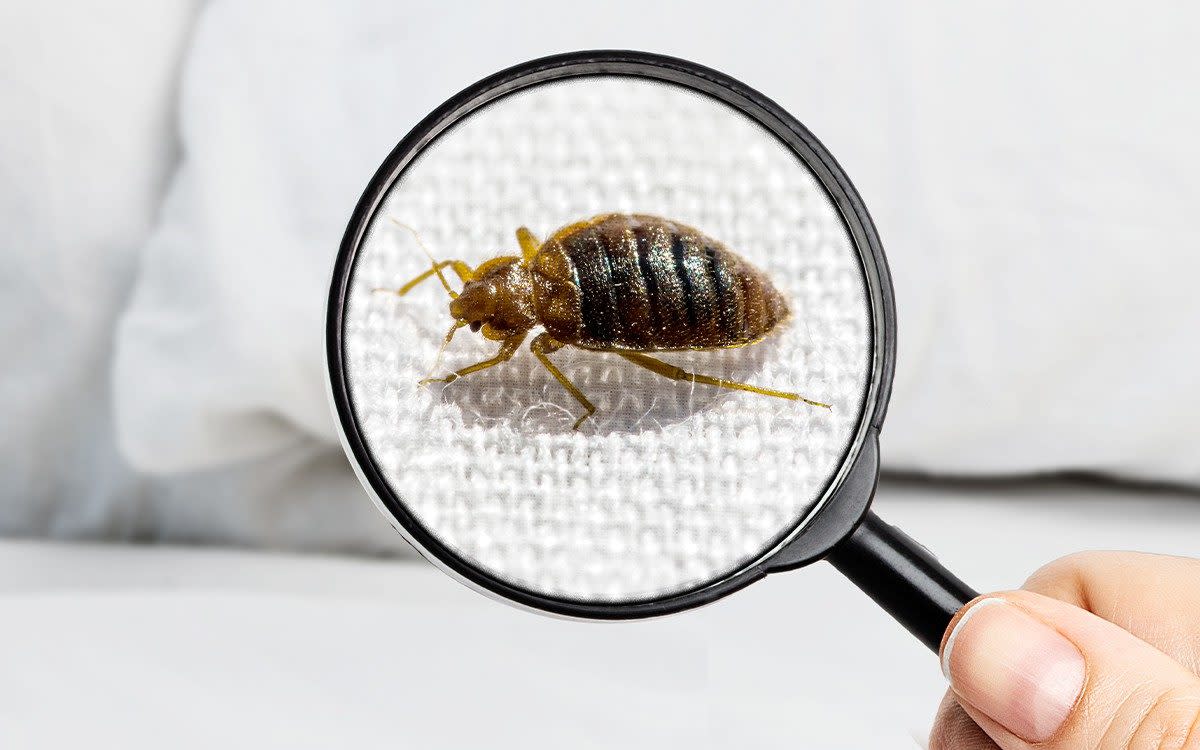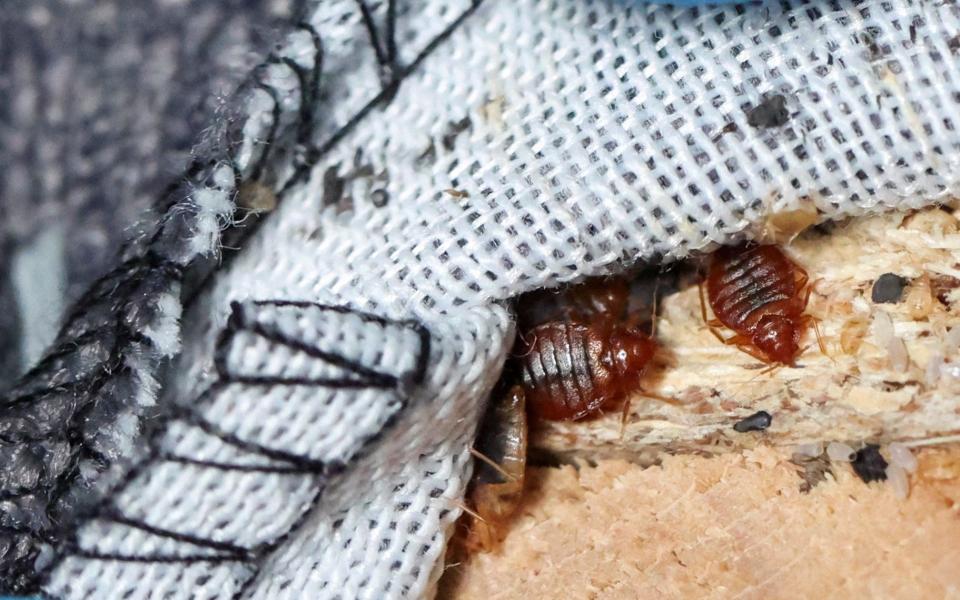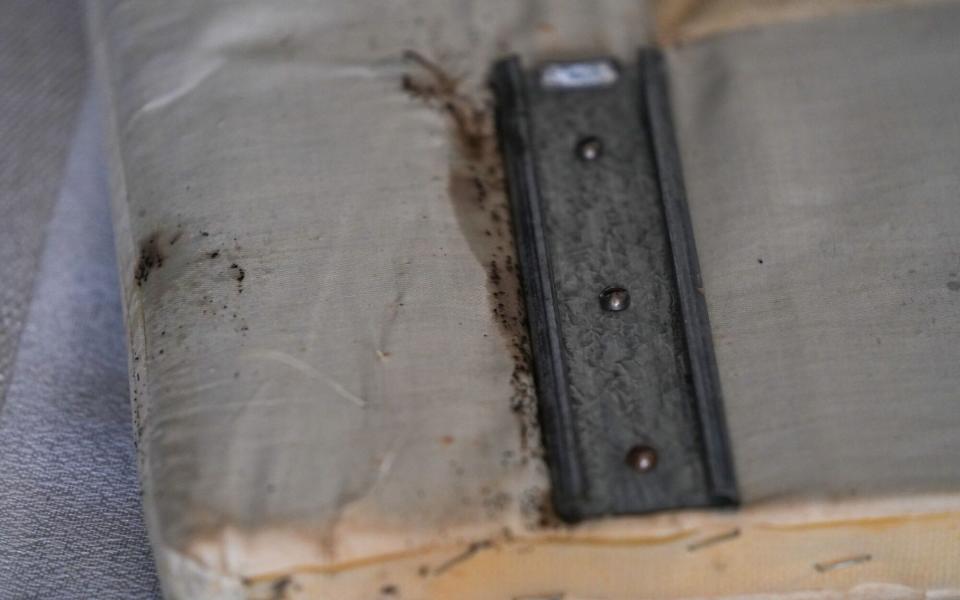The Paris infestation of bed bugs could be coming to the UK – here’s what you need to do

This season’s Paris Fashion Week was attended by some uninvited guests. “People were talking about the bed bugs as much as the catwalk shows themselves,” says Caroline Leaper, the Telegraph’s senior fashion editor. “The last thing anyone wants is pests infesting their Prada.”
The City of Light has an unsavoury infestation. Videos circulating on social media show bed bugs crawling across seats on the Paris Metro, trains and buses. They have been spotted in upscale restaurants, hotels and even in Charles-de-Gaulle Airport. The chatter on the front row has been less about the best fashion week parties and more about how to avoid bed bug bites.
Earlier this year, it was reported that bed bugs now affect one in 10 French households – and increased global travel could be to blame. As host to the Rugby World Cup and Fashion Week, Paris has had thousands of international visitors – potentially taking bed bugs with them. The government has vowed to tackle the “scourge” of bugs fearing they will overshadow the 2024 Olympic Games. The deputy mayor of Paris, Emmanuel Grégoire, tweeted that “no one is immune”. Paris not far away – the bugs could have hitched a ride home to London in haute couture. How worried should we be?
Paris could perhaps take note from New York, another global fashion capital, which waged war on bed bugs after a particularly nasty outbreak that peaked in 2010. It was an infestation on an unprecedented scale: the New York citizen’s hotline received 21,922 bed bug enquiries in 2008 – by 2009 this had risen by 54 per cent to 33,772. Bed bugs took over the Google office and shut shops including Abercrombie and Fitch and Niketown. Even Bloomingdale’s admitted to finding “one bed bug” in its flagship 59th Street store.
City officials fought back in a dramatic fashion. “To bed bugs in New York,” a spokesperson shouted from the steps of City Hall, “Drop dead. Your days are over, they’re numbered, we’re not going to take it anymore.” A Bed Bug Advisory Board was formed and a Bed Bug Battle Plan issued, which included a drive to educate building managers and pest control workers on how to handle outbreaks.
This might sound ridiculously OTT, but it worked – by 2014, bed bug incidents in the city had dropped by more than half. So if the bloodsucking critters are coming our way, what can we learn from New York?
Firstly: be bed bug aware. Public education was credited with reducing the bed bug population as contrary to popular belief, bed bugs can affect everyone – not just people who live in overcrowded apartments in poorer areas.
“Bed bugs are everywhere,” says James Logan, a professor at the London School of Hygiene and Tropical Medicine. “You’ll find bed bugs in five-star hotels to backpacker’s [hostels]... I’ve been bitten by bed bugs in business class. It doesn’t matter who you are or where you live.
“The key to dealing with the problem is to know the bed bugs are there as quickly as possible – the smaller the infestation, the easier it is to get rid of.” They may only be the size of an apple seed, but bed bugs can have a huge financial and psychological impact and can cost “hundreds, sometimes thousands” to treat.

As Orlando Bird, Telegraph Letters Editor, discovered to his cost. “My wife and I have cats, so when I saw an insect scuttling across the duvet, I dug out the flea treatment. Two months and several Google searches later, we realised we were infested with bed bugs. In the end we spent well over £1,200 on an exterminator, who heated each room in our flat to 180C.”
The cimex lectularius, the most common species of urban bed bug, can travel on suitcases, clothes and public transport, and even survive on household pets or rodents. They are largely hidden during the day and come out at night to feed on their “host” while they sleep.

“People think bed bugs are just crawling around on your bed,” says Logan, “but they’re only on your bed to come and feed on you; [usually] they’re hiding somewhere in the bed frame, in other furniture, behind skirting boards, under the carpet.”
The first sign of an infestation is usually a bite, which looks similar to a mosquito bite, although they often tend to bite in clusters or in a line. Other tell-tale signs include blood spots on your bedsheets, or a characteristic musty smell.
“Once you have an infestation, they breed incredibly quickly – all you need is one pregnant female to be in your suitcase, and it will come out and lay hundreds of eggs,” says Logan. “They hatch and breed within a matter of weeks and then you have thousands. So they can explode very quickly. We usually use toxic insecticides to kill them, but they are now becoming resistant to them.”
The best way to avoid an infestation is to stop them entering your house in the first place. Logan warns to be especially careful in hotels. “Keep your suitcase off the ground and zipped up. Do a check before you go. Don’t leave your clothes on the floor,” he says.
If you find you’ve been in a room with bed bugs, Logan suggests unpacking your bag in the outdoors “because they won’t survive outside. And I would often wash my clothes at 60 degrees and possibly even tumble dry them.” It’s also fairly common to catch them from public transport.
The second lesson from New York is to leave treating bed bugs to the experts – hence the dedicated bed bug task force. According to Hugh Barrie, who runs the Bed Bug Doctor in Bournemouth, “there’s nothing you can buy online and no magic cure” to get rid of them yourself. “The chemicals you need can only be applied by a pest controller,” he adds.
Bed bugs can walk up to 30 metres in one day and travel between different rooms in a home or flats in an apartment block.
And don’t think they’ll die off on their own: they have been found to be able to survive up to a year without food.

 Yahoo News
Yahoo News 
